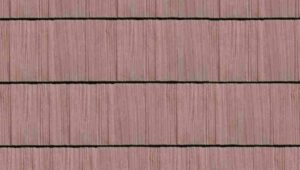
Courtesy of BobVila.com
There are a variety of siding options, let alone a variety of wood siding options. If you are leaning toward choosing wood siding for your home or commercial building, here is an overview of the options you have, courtesy of BobVila.com
Pine
Pine has long been a standard for exterior siding. Pine and its related softwoods—spruce and fir—can be less expensive than other species. Knot-free pine can be difficult to get in longer lengths, though, which can make a project more labor-intensive and costly. Pine holds a finish well, and is preferable when painting or staining horizontal siding. It is typically used for clapboards, but some contractors are wary of fast-growth pine for siding because it can be prone to cupping, splitting, and checking. Pine is not a rot-resistant wood, so it is important to keep it sealed and well maintained.Spruce
A member of the pine family, this softwood is readily available in East Coast markets as a substitute for pine. It comes in longer lengths than pine, and has many of the same characteristics. It is typically used for board siding, especially clapboards. Again, since it is not a naturally rot-resistant wood, it is important to regularly maintain and seal the wood.Fir
Like pine and spruce, fir is used as an economical siding option. It comes in long lengths, is easy to cut and install, takes a finish well, and is readily available regionally in the West. Like the other softwoods, fir is easily milled to a pattern, be it shiplap, tongue-and-groove, or board-and-batten.Cedar
Cedar siding is known for its grain and its rot resistance. It is straight and resists splitting. Cedar takes a stain well and reveals a rich character. It is commonly used in shakes and shingles because it is dimensionally stable, resists swelling, and has less cupping and splitting. Cedar clapboards are popular, too, but clear grade A cedar can be costly. Still, for its grain and texture, cedar is preferred for stain applications. Cedar siding is naturally more moisture and insect-resistant than pine, but must be treated and maintained to retain these qualities. All woods must be sealed and stained or painted to resist moisture, damage, and decay.Redwood
Perhaps the hallmark of rich texture and tone, redwood is a good choice for siding in all climates. Redwood resists shrinking, so it holds its profile and keeps its joints with little warping or cupping. Redwood has little pitch or resin, so it absorbs and retains its finish very well and requires less maintenance than some other species. Redwood is also naturally insect resistant, not just on the face but throughout the wood. Grown in the West, redwood can be difficult to obtain in other regions.Price and Options
Wood pricing varies depending on the market. It may be difficult to get some native western woods on the East Coast, for example, because consumers buy it up in the local markets. And because some woods cannot be harvested as quickly as others, the supply is naturally lower. Check with your builder or local lumberyard before making a final decision.Some companies offer pre-primed planks, shakes, and shingles. These boards come primed on one or both faces, and are sealed and protected from the minute they arrive on site. These boards and shingles may be dipped or factory coated. Before installing, make sure that edges and ends are properly sealed. Freshly cut ends must always be primed and sealed before nailing.
A good wood siding should last for many, many years, but it must be properly maintained. Proper maintenance includes power washing, staining and sealing whenever the heat of the sun fades the finish, or moisture starts to turn to mold or mildew. Always allow wood to dry well before applying a new stain or finish.
Exterior Specialties of PA is here to help with all of your wood siding options, exterior siding, siding installation, siding repair and siding maintenance needs. Call us today at (215) 453-9180 for your FREE estimate!
